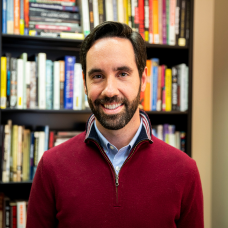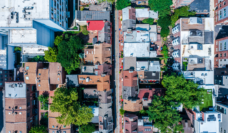In the United States, the COVID-19 pandemic was accompanied by a historic rise in gun violence. After two years of record-breaking increases, gun homicides finally began to wane in 2022. Recent data shows that homicide rates dropped again in many cities in 2023, representing one of the sharpest declines in gun violence the country has ever seen.
To be very clear: this is good news. But shooting and homicide rates are still higher than before the pandemic. Even after reaching its lowest-ever level of homicides in 2014, America still had a homicide rate significantly greater than that of peer nations, such as Canada, Japan, and Germany. Rates of gun homicide and suicide in the U.S. remain higher than similar countries by orders of magnitude.
Peace is entirely relative. Returning to pre-pandemic “business as usual” is not an acceptable objective, considering mounting evidence that gun violence has far-reaching effects on the well-being of our society, exacerbating existing disparities in health across racial and socioeconomic lines. We cannot let short-term improvements distract from the much bigger picture. Gun violence has always been unacceptably high in America, and we have profoundly underestimated its broader consequences.
It is not enough to simply say that gun violence is a public health problem.
In the past few years, my colleagues and I have researched how gun violence exposure relates to a range of health outcomes, both among individuals and throughout whole communities. People are exposed to gun violence directly by being shot or threatened with a gun, but they also experience it indirectly through knowing a family member or friend who has been shot, or by living in a community where they hear or witness shootings.
In nationally representative samples of Black and American Indian and Alaska Native adults, my research team found that 3-6% of respondents say they had been shot with a gun, while about 40% knew a family member or friend who had been shot. Most strikingly, 13% reported experiencing three or more different types of gun violence exposure in their lifetime.
Different gun violence exposures, individually and cumulatively, have critical implications for mental, physical, and behavioral well-being. For instance, people who experience greater gun violence exposure suffer from more sleep problems related to falling or staying asleep. And Black Americans exposed to gun violence are at greater risk for suicidal thoughts and attempts. Longitudinal research using health insurance claims shows that gunshot survivors, both children and adults, and their family members experience long-term consequences related to pain diagnoses, psychiatric disorders, and substance use disorders. Health care spending increases substantially following firearm injuries, contributing to an estimated economic toll of $557 billion, which is roughly equivalent to 2.6% of gross domestic product.
Gun violence is concentrated in poor communities of color throughout America’s cities. In a study of nearly 16,000 neighborhoods across the largest 100 cities in the U.S., my colleagues and I found that gun violence was linked to poorer health in whole neighborhoods the following year. High levels of gun violence also shackle local economies, fueling ongoing cycles of violence and worsening health in the country’s hardest-hit communities. It is not enough to simply say that gun violence is a public health problem. It is more accurate to say that gun violence shapes population health and exacerbates existing inequalities in well-being.
Rather than rest on the laurels of progress, we must build on the success of 2023 and continue to reduce rates of gun violence throughout the country using every means available at local, state, and national levels. Our collective aim should be to significantly lower shootings and homicides to achieve rates comparable to those of our international counterparts (well below the levels recorded in the U.S, in 2014).
Momentum is crucial. But we also need to recognize that short-term progress alone cannot mitigate the tremendous harm already wrought by decades of violence in many of America’s most vulnerable communities. Our research documents the true costs of America’s shameful exceptionalism. Any truly long-term solution requires a fundamental shift in how we think about gun violence as a key driver of public health.
Photo via Getty Images














